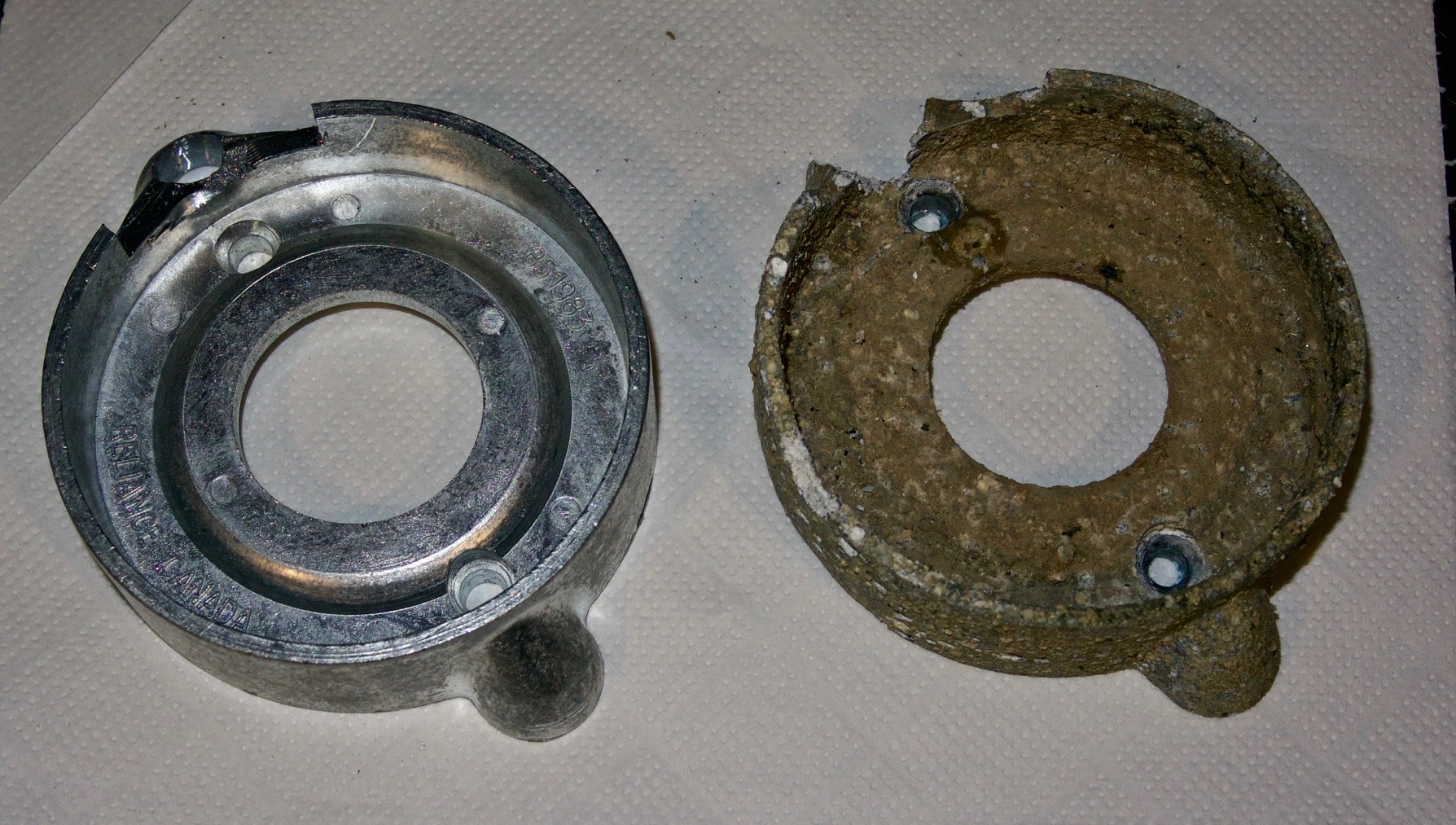Please excuse my ignorance on this subject, but what does the anode bolted to the hull do?
If i find pitting, how thick is the housing? Or in other words how deep does the pitting need to be before i get a large expense? At the moment the oil looks OK (no sign of milkyness).
Can the pitting be filled with a suitable metal filler / glue? Should the leg be sanded, primed and re-painted?
What the hull anode does depends entirely on what it is connected to. So just look inside the boat where the wires from the hull anode bolts go to. Our boat, being a fully isolated one does not have or need a hull anode.
Don't know how thick the housing is, maybe 3-4mm I would guess, varies where. Yes, if you can find pitting, you can fill it, after cleaning it up. I used International Watertite to fill some pitting on our (also aluminium) lower rudder bearing housing and the leftovers to fair the lead keel and fix up the windlass body. Held up superbly in all three cases, so I guess that's a recommendation.
If there is any paint missing off the leg, it's definitely worth touching that up or repainting if it's widespread or you had to fill in pitting. The paint layers isolate the metal from the seawater entirely, which greatly reduces galvanic corrosion and therefore makes your anode(s) last much longer. Ours last two years and have plenty left when we replace them.
